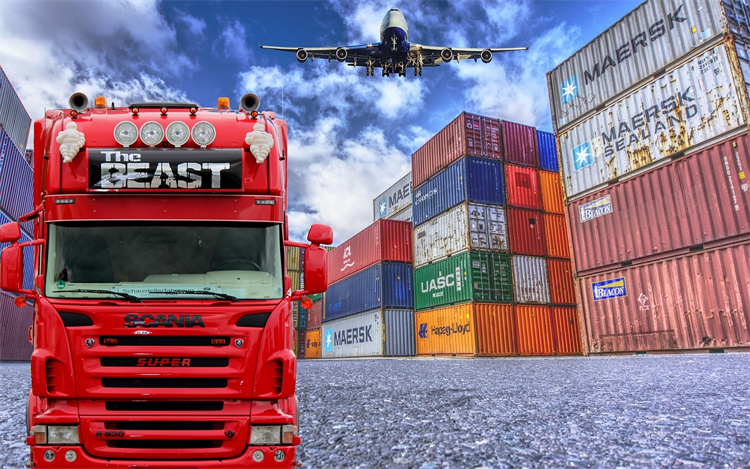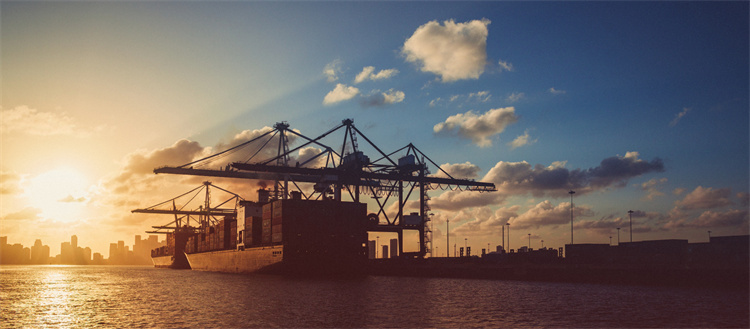How Global Trends Will Impact Ocean Freight Rates in 2025

The ocean freight rate forecast 2025 highlights significant fluctuations in the shipping market, driven by global trends reshaping the industry. Experts anticipate that freight rates could vary widely, with some estimates suggesting they may climb to between $20,000 and $30,000 by early 2025. Factors such as geopolitical tensions, labor strikes, and evolving trade policies contribute to the uncertainty. Understanding these dynamics is crucial for effective procurement planning in 2025. Given that ocean freight remains up to 16 times more cost-effective than air freight, staying informed about the ocean freight rate forecast 2025 is key to developing efficient and economical logistics strategies.
Key Takeaways
Stay informed about geopolitical tensions and trade policies, as they can significantly impact ocean freight rates and supply chain efficiency.
Monitor environmental regulations, such as IMO standards, to prepare for compliance costs that may affect freight pricing. Leverage technology like JUSDA's JusLink platform for real-time data and predictive analytics to optimize your logistics strategy and anticipate rate fluctuations.
Diversify your carrier partnerships to mitigate risks associated with labor disruptions and capacity shortages in the shipping industry.
Invest in sustainable shipping solutions to align with upcoming regulations and enhance your company's environmental responsibility.
Prepare for potential labor market challenges by building flexibility into your supply chain and staying updated on labor trends.
Understand the implications of alliance reshuffling among carriers to adapt quickly and minimize disruptions in your shipping operations.
Key Global Trends Driving the Ocean Freight Rate Forecast 2025

Geopolitical Tensions and Trade Policies
Shifting trade alliances and their impact on the ocean freight market
Geopolitical tensions continue to reshape the global ocean freight market. Shifting trade alliances force businesses to adapt to new trade dynamics. For example, disruptions in established trade routes often lead to congestion at ports and longer transit times. These changes directly affect the flow of goods, creating inefficiencies in the supply chain. The Suez Canal, a critical shipping route, has seen increased risks due to escalating crises in the Middle East. As vessels divert to alternative routes, freight rates surge along key shipping lanes. You must monitor these developments closely to anticipate potential challenges during the 2025 tender season.
Tariffs, sanctions, and their influence on supply chain disruptions
Trade policies, including tariffs and sanctions, play a significant role in shaping the ocean freight market. These measures disrupt supply chains by increasing costs and limiting access to certain markets. For instance, potential tariff changes tied to election outcomes in the United States could alter trade dynamics globally. Such uncertainties make it essential for you to stay informed about policy shifts. By understanding these factors, you can better prepare for the 2025 tender season and mitigate risks associated with sudden changes in trade regulations.
Environmental Regulations and Compliance Challenges
IMO 2023 and upcoming 2025 climate protection requirements
Environmental regulations remain a key trend influencing the ocean freight market. The International Maritime Organization (IMO) introduced stricter emission standards in 2023, and additional climate protection requirements are expected by 2025. These regulations aim to reduce the environmental impact of shipping but also increase operational costs for carriers. Compliance with these standards requires significant investment in cleaner technologies and fuels. As a stakeholder, you should consider how these changes will affect freight rates and plan accordingly.
Costs of adopting sustainable shipping technologies
The push for sustainability drives innovation in the shipping industry. However, adopting new technologies comes with high costs. Shipowners face expenses related to retrofitting vessels or investing in alternative fuel solutions. These costs often translate into higher freight rates, impacting the global ocean freight market. To navigate this challenge, you can explore partnerships with carriers that prioritize sustainability while maintaining cost efficiency.
Technological Advancements in the Ocean Freight Market
Automation, AI, and their role in optimizing freight operations
Technological advancements are transforming the ocean freight market. Automation and artificial intelligence (AI) enhance efficiency by streamlining operations and reducing human error. Predictive analytics, powered by AI, helps carriers optimize routes and manage capacity effectively. These innovations improve service reliability and reduce costs. By leveraging these technologies, you can gain valuable insights into freight trends and make data-driven decisions for your supply chain.
Cybersecurity risks and their implications for freight costs
As technology becomes integral to the ocean freight market, cybersecurity risks emerge as a critical concern. Cyberattacks on shipping companies can disrupt operations and compromise sensitive data. These incidents lead to financial losses and increased insurance premiums, which ultimately affect freight costs. To safeguard your supply chain, you should prioritize working with carriers that invest in robust cybersecurity measures.
Potential Obstacles Facing the Ocean Freight Market in 2025
Labor Market Challenges and Workforce Disruptions
Strikes, labor shortages, and their impact on freight operations
Labor disruptions remain a significant concern for the ocean freight market in 2025. Strikes by dockworkers or port staff can halt operations, causing severe supply chain disruptions. For example, a single strike at a major port could delay shipments for weeks, creating bottlenecks across global trade routes. Labor shortages further compound these issues. With fewer workers available, ports may struggle to maintain efficiency, leading to longer wait times and increased costs. You must prepare for these potential disruptions by diversifying your logistics strategies and building flexibility into your supply chain.
Rising labor costs and their effect on ocean freight rate forecast 2025
Economic pressures continue to drive up labor costs in the shipping industry. Higher wages for port workers and seafarers directly impact operational expenses for carriers. These rising costs often translate into higher freight rates, affecting your overall logistics budget. To mitigate these challenges, consider collaborating with carriers that adopt cost-efficient practices. By staying informed about labor trends, you can anticipate changes in freight rates and adjust your procurement plans accordingly.
Fleet Developments and Capacity Management
Overcapacity concerns and the delivery of new vessels
The delivery of new vessels in 2025 introduces both opportunities and risks for the ocean freight market. While additional ships may alleviate capacity constraints, overcapacity poses its own set of challenges. Excess carrier capacity can lead to inefficiencies, as vessels may operate below optimal load levels. This imbalance disrupts freight pricing, creating uncertainty for shippers like you. Monitoring fleet developments and aligning your shipping needs with market conditions will help you navigate these potential obstacles effectively.
Scrapping older vessels to meet environmental standards
Environmental regulations push carriers to retire older, less efficient vessels. While this move supports sustainability goals, it also reduces the overall fleet size, exacerbating capacity constraints. Fewer available ships can lead to higher freight rates, especially during peak seasons. You should evaluate how these changes might affect your shipping plans and explore partnerships with carriers investing in modern, eco-friendly fleets.
Alliance Reshuffling and Market Consolidation
Implications of alliance transitions on freight pricing
Alliance reshuffling among major carriers creates uncertainty in the ocean freight market. When carriers adjust their partnerships, it often disrupts established trade routes and schedules. These disruptions can lead to fluctuating freight rates, making it harder for you to predict shipping costs. Staying updated on alliance changes will enable you to adapt quickly and minimize the impact on your supply chain.
Risks of reduced competition in the ocean freight market
Market consolidation among carriers reduces competition, which can lead to higher freight rates and fewer service options. With fewer players in the market, you may face limited choices for routing and scheduling. This lack of competition increases the risks of supply chain vulnerabilities, especially during periods of high demand. To counter these rising challenges, consider diversifying your carrier partnerships and exploring alternative shipping solutions.
Actionable Strategies for Navigating Supply Chain Disruptions in 2025

Leveraging Data and Predictive Analytics with JUSDA's JusLink Platform
Using data to forecast ocean freight rate trends
Data plays a crucial role in understanding the freight shipping industry. By leveraging JUSDA's JusLink platform, you can access real-time market intelligence to predict ocean freight rate trends. Analyst predictions often rely on historical data and current market landscape insights. JusLink integrates these elements, offering you accurate forecasts tailored to your supply chain needs. This proactive approach helps you anticipate rate fluctuations and make informed decisions for your logistics strategy.
Optimizing supply chain operations with real-time insights
JusLink provides real-time insights that enhance supply chain stability. The platform enables you to monitor shipments, track inventory, and identify potential bottlenecks. With this level of visibility, you can address challenges before they escalate. JusLink’s advanced analytics tools also allow you to optimize routes and reduce transit times. These features ensure that your supply chain operates efficiently, even in unpredictable market conditions.
Diversifying Carrier Partnerships and Warehousing Solutions
Building relationships with multiple carriers to mitigate risks
Relying on a single carrier increases your vulnerability to disruptions. Diversifying your carrier partnerships strengthens your logistics strategy. By working with multiple carriers, you reduce the risk of delays caused by labor strikes or capacity shortages. JUSDA’s extensive network of carriers ensures that you have access to reliable options, regardless of market volatility. This approach safeguards your operations and enhances your ability to adapt to sudden changes.
Utilizing JUSDA's warehouse solutions for inventory management
Effective inventory management is essential for maintaining supply chain stability. JUSDA’s warehouse solutions offer advanced tools for tracking and managing inventory in real time. These facilities provide value-added services like picking, packing, and labeling, which streamline your operations. With JUSDA’s support, you can optimize storage space, reduce costs, and ensure timely delivery of goods. This strategy aligns with your goal of achieving efficiency in the freight shipping industry.
Preparing for Regulatory Changes with JUSDA's Expertise
Investing in sustainable shipping solutions
Environmental regulations will continue to shape the freight shipping industry. Investing in sustainable shipping solutions prepares you for these changes. JUSDA offers eco-friendly options that comply with upcoming climate protection requirements. By adopting these solutions, you not only meet regulatory standards but also contribute to global sustainability efforts. This forward-thinking strategy positions your business as a leader in environmental responsibility.
Staying informed about compliance requirements with JUSDA's support
Navigating regulatory changes requires expertise. JUSDA provides comprehensive support to help you stay informed about compliance requirements. Their team monitors policy updates and ensures that your operations align with new standards. This guidance minimizes risks and keeps your supply chain running smoothly. With JUSDA’s assistance, you can focus on your core business while maintaining compliance with evolving regulations.

JUSDA Solutions
To provide you with professional solutions and quotations.
The ocean freight market in 2025 will demand your attention as it navigates complex market dynamics. Geopolitical tensions, environmental regulations, and technological advancements will significantly influence the ocean freight rate forecast 2025. These challenges require you to adopt innovative strategies to maintain efficiency. JUSDA's solutions, such as JusLink and advanced warehouse services, empower you to optimize supply chain operations and predict market dynamics effectively. By embracing these tools, you can overcome challenges and thrive in the global ocean freight markets. A proactive approach will ensure your success in this evolving landscape.
FAQ
What are the different segments within ocean freight?
Ocean freight consists of several key segments, each catering to specific cargo types and industries. These include:
Container Shipping: Ideal for transporting packaged goods, electronics, and consumer products.
Bulk Shipping: Used for commodities like grains, coal, and minerals.
Tanker Shipping: Designed for liquid cargo such as oil, chemicals, and liquefied natural gas.
Understanding these segments helps you choose the right shipping method for your business needs.
What role does ocean freight play in global trade?
Ocean freight serves as the backbone of global trade. Nearly 90% of the world's goods move by sea, making it an essential mode of transport.
See Also
Exploring Innovations in Sea Freight Logistics for 2024
Top 5 Trends Shaping Supply Chain Efficiency Ahead
Understanding Current Trends in Logistics Risk Management
